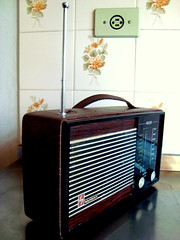Social media is often compared with traditional communication vehicles such as newspapers, radio and TV as antagonists where the new replaces or challenges the old. The blackout in parts of South America last week showed a different side of this relationship: a symbiosis between radio broadcasts and microblogging. I was in Brazil visiting family and friends during that event and witnessed what a major power outage looks like in the era of social media and our increasing dependency on electricity.

Image by [JP] Corrêa Carvalho – يوحنا بولس via Flickr
As a matter of fact, I had the unusual, err, opportunity of being in two of the top five power outages in history: I was in Toronto when the Northeast blackout of 2003 happened, and in São Paulo during the Brazil and Paraguay outage last week. The one in 2003, of course, happened before the “broadcast yourself” era, with plenty of daylight left, so my major concern back then was finding a pub with cold beer and some food.
Last week, the blackout started at 11 pm, and most people had no idea of how widespread the problem was. Try to imagine a city like São Paulo, with 18 million people and 6 million cars in its metropolitan area, with no traffic lights on a hot summer night:

São Paulo during the 2009 Blackout – Photo by Andreia Reis, Creative Commons, Attribution 2.0
For most people in Brazil, the only source of information still operating was the good ol’ radio broadcasting. And, ironically enough, the major source of
information for the radio stations was Twitter, as some cellular phone networks were still operating despite the outage. Through Trendistic, you can actually see the spike in Twitter with the use of words “luz” and “apagão” (“light” and “blackout”, in Portuguese):
The pop singer Madonna was in Brazil with her boyfriend Jesus Luz that same week, and inspired several tweets that night, the most common being along the lines of: “Blame Madonna for the blackout: she asked Jesus to turn off the lights”.
And if you were there too, you may want to buy this CafePress T-Shirt (“Blackout 2009: I twittered about it”)

Of course, as power was restored a few hours later, the other media channels started to catch up with the event, as can be seen in aggregators such as BlogBlogs. One of the interesting stories was that of a married man stuck in his lover’s house, as the garage door was power operated (article available in Portuguese only, sorry).
This fantastic video posted by Tiago Compagnoni in YouTube registered the whole blackout event is fast motion:
The next time I drop by WalMart, I’ll make sure to buy one of those hand-crank radio/flashlight combos, and perhaps some candles and matches too, just in case social media is not there to rescue me if I get (un)lucky a third time.

![Reblog this post [with Zemanta]](http://img.zemanta.com/reblog_e.png?x-id=40308ce5-55a8-41af-bec8-38a04780c9f5)



